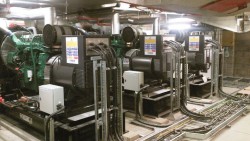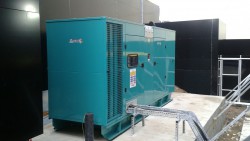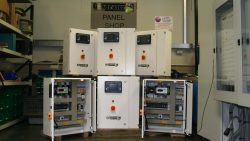Sustainability in the construction industry is no longer a mere trend, but a crucial responsibility shared by builders, architects, and the wider community. As global environmental challenges intensify, more companies are shifting towards eco-friendly materials and practices that reduce carbon footprints. This movement signals not just a change in the way structures are built, but also a fundamental shift in mindset towards protecting the planet.
Many governments worldwide have introduced regulations that incentivize the use of renewable resources, green building technologies, and efficient energy systems. These rules and recommendations encourage architects and developers to integrate eco-friendly components into their projects from the earliest planning stages. As a result, the construction landscape is evolving to embrace healthier working environments, reduced waste, and enhanced comfort for occupants.
Key Components of Sustainable Construction
One of the core components of eco-friendly construction is the use of low-impact, renewable materials that have been sourced responsibly. Such materials often include bamboo, reclaimed wood, and recycled metals, which minimize the depletion of natural resources. Furthermore, these resources tend to exhibit greater durability and require less maintenance over the long term, thereby offering cost-effectiveness for project owners.
Another vital element in sustainable building is energy efficiency, achieved through advanced insulation, passive design strategies, and the integration of solar panels or geothermal systems. By optimizing the use of natural light, builders can reduce reliance on artificial lighting, subsequently decreasing electricity costs and environmental impact. At the same time, smart technology and monitoring systems allow for real-time adjustments that keep energy use under control.
„Od dawna interesuję się zrównoważonym budownictwem. Ale kiedy mam wolną chwilę, chętnie sprawdzam swoje szczęście w https://casino.betonredkasynos.pl/, bo wierzę, że równowaga jest kluczem do wszystkiego.”
– Adam Kowalski, ekspert ds. architektury ekologicznej
Balancing professional pursuits and recreational interests is a reality for many people, illustrating how interconnected our personal and professional lives can be. Even within a bustling construction sector, moments of leisure can provide the mental reset necessary for maintaining creativity and innovation. This harmony of work and relaxation underscores the broader theme of sustainability: mindful resource management in every facet of life.
Benefits of Eco-Friendly Practices
The adoption of eco-friendly building methods provides numerous benefits, including healthier indoor air quality and reduced operating costs. Lower energy consumption translates to lower utility bills, while improved ventilation systems help create comfortable living or working spaces that support occupant well-being. Together, these perks not only appeal to environmentally conscious clients but also add tangible long-term value to any property.
Another advantage is the potential to earn green building certifications, which can enhance a project’s reputation and marketability. Such certifications often require meeting stringent criteria, covering everything from water conservation to waste reduction. Meeting these standards demonstrates a commitment to responsible business practices, attracting investors, tenants, and stakeholders who value sustainability.
Top Strategies for Implementation
Construction professionals interested in integrating green principles can adopt a variety of strategies from the planning phase to project completion. Incorporating natural ventilation and lighting systems ensures buildings utilize fewer artificial resources, thereby cutting energy usage. On-site water treatment and rainwater harvesting can reduce municipal water demand and encourage self-sufficiency.
Below are some practical approaches to consider when aiming for more eco-friendly buildings:
- Choose certified sustainable materials and prioritize local sourcing
- Implement modular construction techniques to minimize waste
- Incorporate renewable energy systems, such as solar or wind power
- Utilize green roofs or vertical gardens to improve air quality
- Leverage smart technology to monitor and optimize energy consumption
Each of these practices can be tailored to specific project goals, whether you are seeking to reduce waste, lower costs, or improve the overall environmental impact of your development. The flexibility of sustainable building ensures that it can adapt to diverse climates, budgets, and architectural styles, making it an appealing option for a wide range of stakeholders.
Looking Ahead: The Future of Eco-Conscious Construction
As the demand for greener, healthier built environments continues to rise, innovations are emerging at an unprecedented pace. Advanced materials with higher thermal efficiency, carbon-capturing concrete, and smart energy grids are just a few examples of what the future might hold. These technologies promise not only to make buildings more sustainable, but to push the boundaries of design and functionality in ways never before imagined.
Furthermore, the integration of data analytics and artificial intelligence will allow builders to predict and optimize a structure’s environmental impact across its entire lifecycle. From the extraction of raw materials to demolition or renovation decades down the line, every phase can be tracked and improved. This transformative approach ensures that each generation of buildings will progressively surpass the last in its adherence to eco-friendly standards.
Ultimately, sustainable building and eco-friendly practices are paving the way for a more responsible, resilient, and prosperous future in the construction industry. By embracing smarter technologies, renewable materials, and holistic project management, companies and communities can work together to preserve the planet while meeting modern demands. As new concepts and strategies emerge, the path ahead looks increasingly promising for those committed to building a world where development and environmental stewardship go hand in hand.





